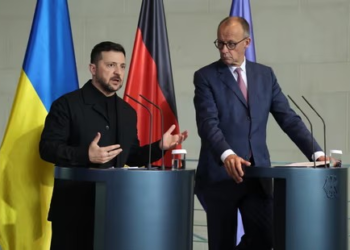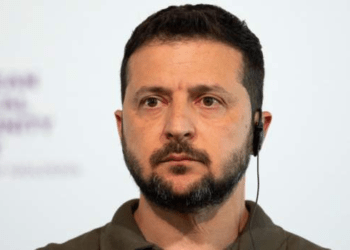Ukraine’s Prime Minister, Denis Shmyhal, has iterated a belief that frozen Russian assets should be used to close the funding gap for Ukraine’s reconstruction efforts amid the war.
An estimated $300bn of Russian assets have been frozen since the war started in February 2022.
Shmyhal stated that it is evident that Ukraine’s needs for reconstruction have continued to grow over the past year.
As such, he asserted that the main resource for Ukraine’s recovery should be the confiscation of Russian assets frozen in the West.
“We need to start this process already this year,” he said.
Nonetheless, Shmyhal said that concurrently, the Ukrainian government is creating conditions to attract private investments, which will accelerate the reconstruction process and transform the country on its path to the EU.
Shmyhal’s remarks were made amid the publication of the World Bank’s latest Ukraine Damage and Needs Assessment; a report which takes stock of almost two years of the war, estimating damage and losses along with recovery and reconstruction needs for 10 years.
It is the third of such report undertaken jointly by The World Bank, the European Commission, and the United Nations with the government of Ukraine and other partners.
In the report, The World Bank, the European Commission, and the United Nations increased their estimates for the total cost of reconstruction and recovery in Ukraine to $486 billion (€452.8 billion) over the next decade, up from $411 billion (€383 billion) estimated one year ago.
They said that in 2024 alone, Ukrainian authorities estimate that the country will need around $15 billion (€14 billion) for immediate reconstruction and recovery priorities at both the national and community level, with a particular focus on supporting and mobilising the private sector alongside restoration of housing, soft infrastructure and services, energy, and transport.
It was said that Russia’s war on Ukraine has now caused 152 billion U.S dollars in direct damage to buildings and infrastructure.
The most affected sector is housing (almost 56 billion US dollars, or 37 per cent of total damage).
Across the country, 10 per cent of the housing stock has been damaged or destroyed, prolonging the displacement of Ukrainians from their communities.
A Testament To Ukraine’s Resilience
Also in the joint statement, Antonella Bassani, World Bank Vice President for Europe and Central Asia, lauded Ukraine’s resilience amid the ongoing war.
Bassani noted that the last two years have seen unprecedented suffering and loss for Ukraine and its people.
“Yet, while this updated assessment documents the extensive damages and consequent needs, it is at the same time a testament to Ukraine’s resilience—demonstrating that the dedication and adaptability of its people have helped to already repair some of the damage and build towards recovery.”
Antonella Bassani
Despite the continuing conflict, the report said that Ukraine had managed to start recovery and restoration efforts, helped by financial support from donor countries and multilateral organisations.
During 2023, restoration works were completed for 3,836 multifamily apartment buildings and 19,091 single-family houses; for 448 schools, 237 kindergartens, and 390 medical facilities and social protection institutions; and for 9,200 critical infrastructure facilities, 449 heating supply facilities, and 221 water supply and sanitation facilities.
The latest Damage and Needs Assessment also presents the case for investment in Ukraine’s human capital.
Denise Brown, United Nations Resident Coordinator in Ukraine, said, “The war is not over. The suffering is not over.”
“But communities in Ukraine are demonstrating significant courage and commitment in driving their own inclusive recovery processes and they need the continued support of their international partners,” Brown said.
Brown added, “The future of Ukraine depends upon the people of Ukraine; this is where we need to invest.”







